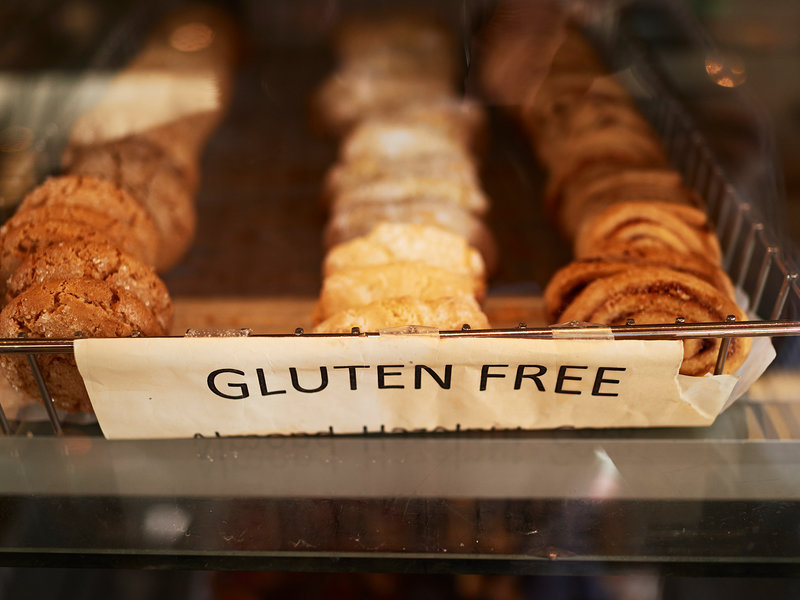Gluten Impossible to Avoid for Most People, Study Shows
By Van Waffle
A new intensive study confirms that people with celiac disease are frequently exposed to gluten in food. Study researchers found that the majority of participants with celiac disease were inadvertently exposed to gluten, however few of them experienced symptoms or realized when gluten exposure occurred. This study shows that gluten exposure on a gluten-free diet can be common, intermittent, and often silent.
“What’s important to take from this study is not that people need to be more careful and try to be more restrictive in their diet, but that it’s very difficult to eliminate gluten completely,” says lead researcher, Jocelyn Silvester, M.D., Ph.D, Director of Celiac Disease Program Research at Boston Children’s Hospital, who launched the study during her medical postgraduate training at University of Manitoba, Winnipeg, Canada. “Ultimately, what we need is something better than a gluten-free diet.”
"What we need is something better than a gluten-free diet.”
The so-called DOGGIE BAG (Determination of Gluten Grams Ingested and Excreted By Adults eating Gluten-free) study focused on 18 people with celiac disease who returned for a follow-up biopsy two years after their initial diagnosis. For 10 days before the procedure, they kept a food diary, gathered urine and stool samples, and collected one-quarter portions of all their food for analysis. For comparison, three people without celiac disease consuming a normal, gluten-containing diet also completed the study. This extensive reporting by a small group of patients provides an unprecedented snapshot of what they were eating, and how much gluten it contained after two years of treatment.
Out of 313 food samples, 25 tested positive for gluten with a median estimated exposure of 2.1 milligrams. This amount is orders of magnitude lower than would be ingested during a gluten challenge: about 3,000 milligrams. The culprit foods included baked goods, sausages, snacks, and restaurant fare that were supposed to be gluten-free. Out of 18 people with celiac disease, 12 accidentally consumed gluten during the short study period. All participants in the celiac group succeeded in vastly reducing gluten consumption compared to the three controls on a regular diet.
“What was interesting was that people weren’t very good at identifying when they had been exposed to gluten,” says Silvester.
About three-quarters of participants who suspected gluten exposure had at least one food sample test positive, but only two people correctly identified the gluten-containing food. Only once did a patient experience symptoms after consuming gluten. Four out of seven people who believed they had consumed no gluten had eaten at least one contaminated food during the 10-day period. These findings raise the question whether symptoms are a reliable measure of gluten exposure during treatment, Silvester says.
She says that she tells patients, “Don’t expect that you’re going to get zero gluten because that’s probably not practical in the context of living your life. Do your best. Your best effort to avoid gluten is enough for most people.”
“Fortunately, the typical gluten exposure found in this study was a very small amount."
Benjamin Lebwohl, MD, Director of Clinical Research, Celiac Disease Center at Columbia University, who did not work on the study, says, “This is a very well-done study that yields valuable insight on celiac disease and the so-called gluten-free diet, which turns out to often contain some gluten. The fact that this study by necessity consisted of volunteers who fastidiously provided samples of each meal for analysis and submitted multiple stool and urine samples, means that this group is likely on the more conscientious end of the spectrum, and likely does not represent the diverse array of strictness out there among our patients.”
Participants were highly engaged in treatment and had access to dietitians with gluten-free diet expertise, which the study acknowledges is a best-case scenario.
Lebwohl says this underscores growing consensus that total gluten avoidance is impossible for most patients.
“Fortunately, the typical gluten exposure found in this study was a very small amount. A key unanswered question is whether such small exposures, in isolation or in repetition, have any significance for our patients in terms of symptoms, healing rates, or long-term risks,” he says.
Add your data to our iCureCeliac® patient registry today. iCureCeliac® is a free online portal for patients, or their caregivers, to provide critical insights into life with celiac disease. Your participation will help create better diagnostic tools and treatments for cross-contact and gluten consumption, governmental policy changes, and access to new and innovative clinical trials nationwide, which may, one day, cure celiac disease.
